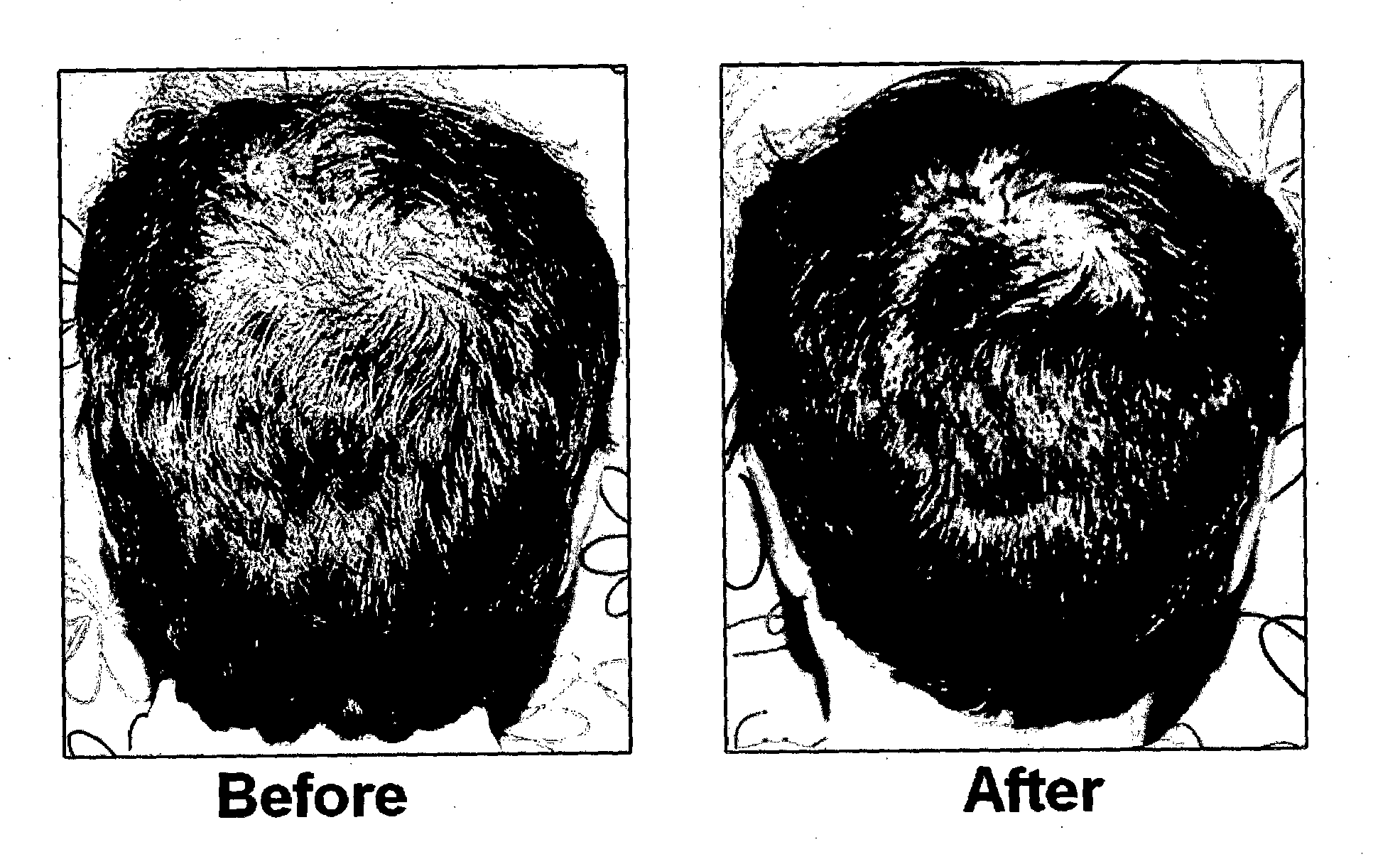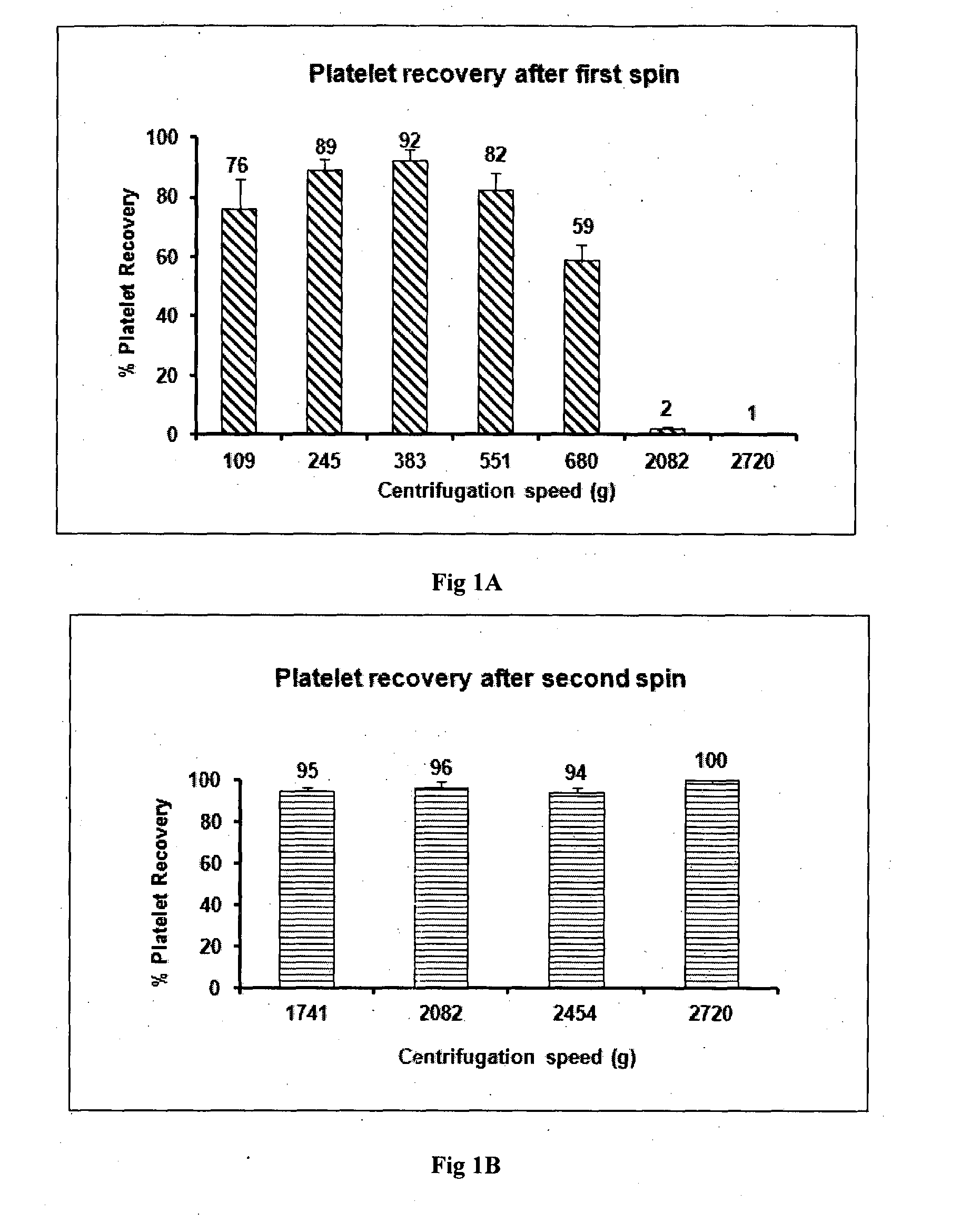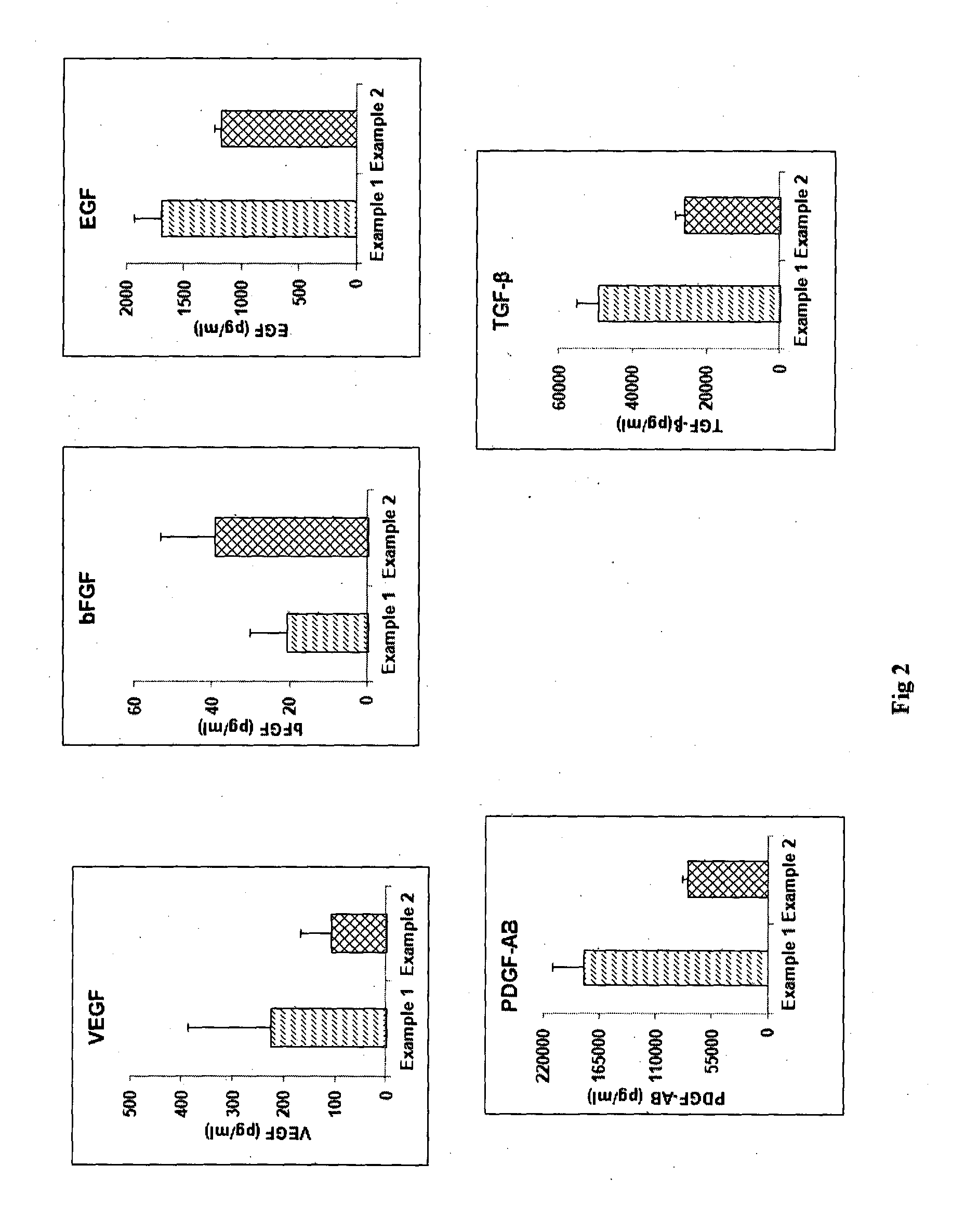Method of preparing a growth factor concentrate derived from human platelets
a technology of growth factor and concentrate, which is applied in the direction of growth factor/regulator, animal/human protein, pharmaceutical non-active ingredients, etc., can solve the problems of non-specific tissue degradation, inability to heal wounds, and ‘off-target’ destruction of growth factors
- Summary
- Abstract
- Description
- Claims
- Application Information
AI Technical Summary
Problems solved by technology
Method used
Image
Examples
example 1
[0080]Human blood was withdrawn into vacutainers after getting informed consent from the patient. About 50-60 ml blood is collected in two types of vacutainers: 50 ml in vacutainers containing ACD-A for preparing GFC and 5-10 ml blood in EDTA tubes for infectious disease marker testing and complete blood parameter testing. Minimum 50 ml of blood was taken for 10 ml of GFC preparation. Blood was transported at 15 to 30° C. preferably at 22° C. within 4 hours of withdrawal. The first centrifugation was done at 382 g for 15 minutes since platelet recovery at 382 g for 15 minutes is optimum with a loss of only 8-10% platelets as shown in FIG. 1A. Platelet loss is significantly greater at lower or higher centrifugation speeds. Upon completion of first centrifugation three layers were formed. At the bottom were packed red blood cells, in the middle were leukocytes and the upper layer had plasma containing platelets. Plasma containing platelets was aspirated and transferred in another ster...
example 2
[0082]The process of Example 1 was followed except that the platelet pellet was suspended in 1 ml of multiple electrolyte isotonic solution and after the freeze-thaw, the thawed solution was then mixed with 9 ml more of multiple electrolyte isotonic solution. FIG. 2 shows a comparison of the concentrations of various growth factors obtained by the process of Example 1 versus Example 2 for blood obtained from the same donor. The graphs show that levels of various growth factors like Vascular Endothelial Growth Factor (VEGF), basic Fibroblast Growth Factor (bFGF), Platelet Derived Growth Factor-AB (PDGF-AB), Epidermal Growth Factor (EGF), Transforming Growth Factor-beta (TGF-β) as determined by Enzyme linked immunosorbent assay (ELISA) were almost comparable in GFC prepared with plasma (Example 1) and GFC which is plasma free (Example 2).
example 3
[0083]The processes of Example 1 and Example 2 were separately followed using blood obtained from the same donor. Further, the suspension containing GFC was mixed with 10% mannitol. The solution was then lyophilized. The lyophilized product was then packed in vials with flip off caps so as to make an “off the shelf” product. FIG. 3 is a comparison of the levels of growth factors obtained by the process of Example 1 and 2 vis-à-vis the process of Example 3 as determined by ELISA. It is evident that the levels of growth factors are almost the same or marginally reduced in the lyophilized GFC product as compared to the GFC prepared by Example 1 and Example 2.
PUM
| Property | Measurement | Unit |
|---|---|---|
| temperature | aaaaa | aaaaa |
| volume | aaaaa | aaaaa |
| temperature | aaaaa | aaaaa |
Abstract
Description
Claims
Application Information
 Login to View More
Login to View More - R&D
- Intellectual Property
- Life Sciences
- Materials
- Tech Scout
- Unparalleled Data Quality
- Higher Quality Content
- 60% Fewer Hallucinations
Browse by: Latest US Patents, China's latest patents, Technical Efficacy Thesaurus, Application Domain, Technology Topic, Popular Technical Reports.
© 2025 PatSnap. All rights reserved.Legal|Privacy policy|Modern Slavery Act Transparency Statement|Sitemap|About US| Contact US: help@patsnap.com



